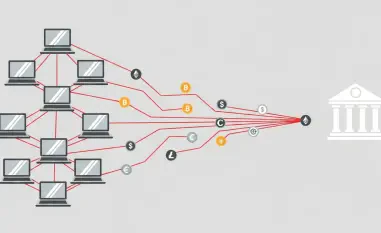What happens when a titan of cybersecurity becomes the hunted? SonicWall, a cornerstone in digital defense for countless businesses, faced a chilling reality in September when state-sponsored hackers infiltrated its cloud backup system, exposing vulnerabilities in even the most trusted protectors. This wasn’t a random act of cyber vandalism but a calculated strike by adversaries with resources and intent far beyond the average criminal. The breach sent shockwaves through the industry, raising urgent questions about the safety of cybersecurity giants in an era where cyber warfare knows no boundaries.
The Stakes of a Cybersecurity Giant’s Fall
This incident transcends a mere technical failure; it serves as a stark warning about the vulnerability of critical infrastructure providers. SonicWall, a lifeline for small and medium-sized businesses (SMBs) relying on edge security solutions, supports a vast network of users who now face potential ripple effects from a single point of compromise. With nation-state actors increasingly targeting such providers, the breach highlights a grim reality: no entity, no matter how fortified, is immune to the sophisticated tactics of state-backed cyber operatives.
The significance of this event lies in its broader implications for the digital landscape. As SMBs form the backbone of global economies, their dependence on companies like SonicWall for protection means that a breach here could expose sensitive data across countless organizations. Industry reports indicate a 60% rise in state-sponsored attacks on cybersecurity firms over the past two years (2023-2025), underscoring an escalating battle where even the defenders are under siege.
Decoding the Intrusion into SonicWall’s Cloud
The mechanics of the breach reveal a disturbingly precise operation. State-sponsored hackers exploited an API call to gain unauthorized access to firewall configuration backup files within SonicWall’s cloud environment, sidestepping conventional security measures with surgical accuracy. This wasn’t a broad, scattershot attack but a focused effort to extract highly specific data, pointing to deep reconnaissance and advanced technical expertise on the part of the attackers.
Though the scope was limited—impacting less than 5% of cloud backup users—the nature of the compromised information raises serious concerns. Firewall configurations often contain critical details about network architecture, making them a goldmine for adversaries planning further incursions. SonicWall emphasized that this breach stood apart from widespread ransomware campaigns like Akira, which have targeted edge devices globally, suggesting a unique, mission-driven motive behind the attack.
Adding to the mystery, the identity of the perpetrators remains undisclosed. SonicWall refrained from naming the specific nation or group responsible, a decision that reflects the murky world of state-sponsored cyber operations where attribution is often obscured by layers of deception. This silence leaves the industry speculating about the geopolitical forces at play, amplifying unease about unseen threats lurking in the digital shadows.
SonicWall’s Counterstrike and Expert Analysis
In response to the breach, SonicWall swiftly enlisted Mandiant, a leading cybersecurity firm under Google’s umbrella, to conduct a comprehensive investigation. Mandiant’s findings offered a measure of relief, confirming that the intrusion was confined to cloud backup files and did not extend to SonicWall’s products, firmware, or other critical systems. This containment was a crucial win, preventing a broader catastrophe that could have undermined trust in the company’s core offerings.
A SonicWall spokesperson articulated the company’s resolve, stating, “Commitment to strengthening defenses remains paramount as nation-state threats intensify against edge security providers.” This statement reflects an acknowledgment of the evolving threat landscape and a determination to adapt. The collaboration with Mandiant not only facilitated rapid remediation but also led to actionable enhancements in SonicWall’s network and cloud infrastructure, setting a precedent for crisis response in the sector.
Industry experts echo the urgency of such measures. Recent studies on cyber espionage trends reveal that state-backed hackers often target backup systems as a gateway to deeper network access, exploiting the trust placed in cloud environments. SonicWall’s proactive stance, while commendable, serves as a reminder that even robust defenses must evolve continuously to counter adversaries who operate with near-unlimited resources and patience.
Ripple Effects on Users and the Industry at Large
For SonicWall’s customers, the breach is a wake-up call to reassess their own security postures. The company urged users to log into their accounts on MySonicWall.com to scrutinize devices for any signs of compromise and to reset credentials using the provided Credentials Reset Tool. These steps aim to mitigate immediate risks, ensuring that potentially exposed services are secured against further exploitation.
Beyond individual actions, the incident casts a spotlight on systemic vulnerabilities in cloud-based backups across the cybersecurity field. With SMBs often lacking the resources for in-house security teams, their reliance on third-party providers like SonicWall amplifies the stakes of such breaches. A 2025 industry survey found that 72% of SMBs experienced at least one cyber incident stemming from third-party vulnerabilities, illustrating the interconnected nature of modern digital threats.
The broader lesson here is clear: state-sponsored attacks are no longer fringe concerns but central challenges for every organization. As nation-state actors refine their methods, targeting the very tools designed to protect users, the industry must grapple with a new paradigm where trust in established systems is perpetually tested. This breach is not just SonicWall’s story—it’s a harbinger of challenges facing all cybersecurity providers in safeguarding a hyper-connected world.
Fortifying Defenses: Steps Forward After the Storm
Looking back, SonicWall’s ordeal underscored the relentless ingenuity of state-sponsored hackers who pierced through layers of defense to access sensitive cloud backups. The incident, though contained, exposed critical gaps in how even leading cybersecurity firms protect their own infrastructure. Reflecting on the response, the partnership with Mandiant and the swift implementation of remedial measures stood out as pivotal in limiting damage and restoring confidence among users.
The path ahead demands more than reactive fixes; it calls for a proactive overhaul of security practices industry-wide. Organizations are encouraged to audit cloud backup systems regularly, enforce multi-factor authentication rigorously, and restrict API access to trusted entities only. SonicWall’s introduction of tools like the Online Analysis Tool provides a practical lifeline for customers to identify and address vulnerabilities swiftly.
Ultimately, the breach served as a catalyst for deeper collaboration between cybersecurity providers, businesses, and policymakers to counter the growing menace of nation-state cyber threats. Moving forward, the focus shifts toward building resilient ecosystems where shared intelligence and cutting-edge innovation can outpace adversaries. The lessons learned from this incident pave the way for a stronger, more vigilant digital frontier, ensuring that past breaches inform future fortifications.













